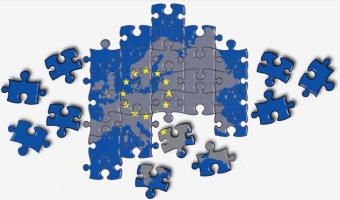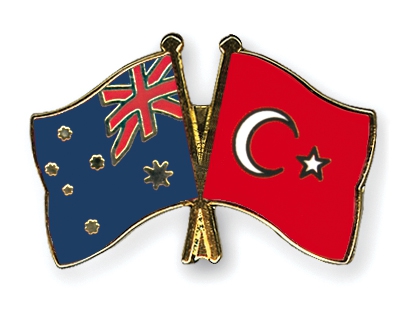
It has been recently announced that Turkey has undertaken the Chairmanship-in Office of the South East Europe Cooperation Process (SEECP) for one year (2020-2021) for the third time as of 1 July 2020. It was mentioned in the press release on the subject that Turkey’s previous Chairmanships were in 1998-1999 and 2009-2010 [1].
We, as the Center for Eurasian Studies (AVİM), for years have been drawing the attention to the historic and geographic integrity of the Balkans which is the core and center of the “South East Europe” sub-region of Europe. Balkans is a region of which its name is actually Turkish. According to Encyclopedia Britannica the word Balkan is Turkish and means mountain [2]. When one refers to Balkans, what has historically come to mind has been a region in which Turkey (at the eastern end), Bulgaria and Romania, and Greece (at the south) are located. The central part of Balkans is comprised of some of the successor states of former Yugoslavia (Serbia. Bosnia-Herzegovina, Macedonia, Montenegro, Kosovo) and Albania. Croatia and Slovenia sometimes in and sometimes out, according to their discretion. In a number of our analysis, we have repeatedly stressed that artificial division of the Balkans is undermining its integrity and overlooking historical realities. Creating new sub-regions with new names serves the purpose of excluding a certain country which is Turkey from the Balkans, hence from Europe. As it was mentioned in one of the AVİM analysis on the subject, “Turkey’s European identity converges with the other regions of the Europe, especially with the Western and Northern Europe, through Balkans.” In the light of all these, we have asserted for long that the name “Western Balkans” is a misnomer. We have also stressed that the EU’s proposed strategy for the “Western Balkans” is a misdesign on the basis of this misnomer [3].
It should be underlined that Turkey is geographically, historically, culturally, and socially a Balkan country. In this respect, it suffices to refer to the Republic of Turkey’s involvement in the various Balkan cooperation processes since 1930s for explaining her Balkan identity [4]. This Balkan identity of Turkey is now once more invigorated in her chairmanship of the South-East Europe Cooperation Process. Looking back to the roots the Balkan Entente Pact of 1934 was a treaty signed by Turkey, Greece, Romania and Yugoslavia on 9 February 1934 as a result of four conferences held from 1930 to 1934 in Balkan countries [5]. This 86 years old treaty which deserves to be remembered how and with which difficulties it was concluded in the hectic days during the inter-war period of two world wars is in fact the most concrete example of cooperation between Balkan countries. It can be considered as forefather of the South- East Europe Cooperation Process. We will touch upon the importance of this Treaty and its ramifications on contemporary developments in a separate article.
According to the web page of the Regional Cooperation Council (RCC) based in Sarajevo which is the operational arm of the SEECP, The South-East European Cooperation Process (SEECP) was initiated in 1996 at the meeting of the Ministers of Foreign Affairs of SEECP held in Sofia/Bulgaria and aims at “strengthening the good-neighborly relations among all participants from South East Europe (SEE), and transforming this region into an area of peace, security, stability and cooperation, with the main goal of full integration of SEE into European and Euro-Atlantic structures” [6]. The Charter on Good-Neighborly Relations, Stability, Security and Cooperation in SEE, adopted in Bucharest in 2000, represents the essential document of the SEECP. The SEECP consists of 13 participants from the SEE region, which are also participants in the RCC Board. These participants, as founding members, are Albania, Bosnia-Herzegovina, Bulgaria, Greece, Republic of North Macedonia, Romania, Serbia and Turkey. The founding members are joined later on by Croatia (2005), Moldova (2006), Montenegro (2007), Slovenia (2010) and Kosovo (2014). The SEECP participants meet at the level of Heads of State/Government, Ministers of Foreign Affairs and Political Directors of the Ministries of Foreign Affairs, under the chairmanship of the participant that holds the one year rotating presidency.
As it was mentioned above, the Regional Cooperation Council (RCC) based in Sarajevo is the operational arm of the SEECP. The EU is a member of the RCC, and is represented in its meetings by a representative of the European Commission and a representative of the European External Action Service. The EU has been providing financial support to the RCC secretariat since it was set up [7].
At this point, we see that the EU follows a multi-purpose “nested doll” (Matryoshka) policy towards the Balkans based on arbitrary standards. On the one hand, the EU pursues an enlargement policy towards the Balkans within the framework of the term "Western Balkans" it has created. On the other hand, by joining RCC, the operational arm of the SECCP, the EU acknowledges that this region is actually the "South East Europe" region. It does not seem realistic to assume that this arbitrary approach will bring security and stability to the “South East Europe” region. If we genuinely aim to transform this region into an area of peace, security, stability and cooperation, with the main goal of full integration of SEE into European and Euro-Atlantic structures, the EU should refrain to divide arbitrarily the region into the pieces and desist from the “balkanization of Balkans”.
*Photo: https://www.aa.com.tr/
[1] “Press Release Regarding South East Europe Cooperation Process (SEECP) 2020-2021 Turkish Chairmanship-in-Office” (Republic of Turkey Ministry of Foreign Afairs, July 1, 2020), 139, http://www.mfa.gov.tr/no_-139_-ulkemizin-guney-dogu-avrupa-isbirligi-sureci-(gdau)-donem-baskanligini-devralmasi-hk.en.mfa.
[2] John B. Allcock, “Balkans,” in Britannica (Encyclopædia Britannica, inc., November 19, 2019), https://www.britannica.com/place/Balkans.
[3] Teoman Ertuğrul Tulun, “A Misnomer: Western Balkans,” Center For Eurasian Studies (AVİM) 2017, no. 24 (July 10, 2017): 5.
[4] Teoman Ertuğrul Tulun, “Are the EU’s Divisive Policies in the Balkans in a Cul-De-Sac,” Eurasian World 3, no. 5 (October 2019): 36–40.
[5] Melek Fırat, “Relations With Greece,” in Turkish Foreign Policy, 1919-2006: Facts and Analyses with Documents, trans. Mustafa Aksin, Accessed from http://nla.gov.au/nla.cat-vn5680539 (Salt Lake City: University of Utah Press, 2010).
[6] “South-East European Cooperation Process - SEECP,” International Organization, Regional Cooperation Council, July 1, 2020, https://www.rcc.int/pages/111/south-east-european-cooperation-process--seecp.
[7] “European Neighbourhood Policy, Working towards a Stronger Partnership: EP’s Position on the 2012 Progress Reports” (European Union, April 21, 2016), http://www.europarl.europa.eu/sides/getDoc.do?type=TA&reference=P7-TA-2013-0446&language=EN.
© 2009-2025 Center for Eurasian Studies (AVİM) All Rights Reserved
No comments yet.
-
 GREECE ATTEMPTS TO FORGE ANOTHER FRONT AGAINST TÜRKİYE WITH A PONTIC NARATIVE
GREECE ATTEMPTS TO FORGE ANOTHER FRONT AGAINST TÜRKİYE WITH A PONTIC NARATIVE
Teoman Ertuğrul TULUN 01.07.2025 -
 THE ORTHODOX CHURCH : ECCLESIASTICAL BATTLE OF MONTENEGRINS WITH THE SERBIAN ORTHODOX CHURCH
THE ORTHODOX CHURCH : ECCLESIASTICAL BATTLE OF MONTENEGRINS WITH THE SERBIAN ORTHODOX CHURCH
Teoman Ertuğrul TULUN 01.09.2022 -
 CONSEQUENCES OF MATERIAL BREACH OF THE LAUSANNE PEACE TREATY
CONSEQUENCES OF MATERIAL BREACH OF THE LAUSANNE PEACE TREATY
Teoman Ertuğrul TULUN 07.10.2020 -
 FROM A MISNOMER TO MISDESIGN: POSSIBLE EU CUL-DE-SAC IN BALKANS
FROM A MISNOMER TO MISDESIGN: POSSIBLE EU CUL-DE-SAC IN BALKANS
Teoman Ertuğrul TULUN 13.03.2018 -
 ARE THE SEEDS OF HOSTILITY AGAINST TURKS BEING SOWN IN AUSTRALIA?
ARE THE SEEDS OF HOSTILITY AGAINST TURKS BEING SOWN IN AUSTRALIA?
Teoman Ertuğrul TULUN 10.05.2019
-
 THE ORTHODOX CHURCH : ECCLESIASTICAL BATTLE OF MONTENEGRINS WITH THE SERBIAN ORTHODOX CHURCH
THE ORTHODOX CHURCH : ECCLESIASTICAL BATTLE OF MONTENEGRINS WITH THE SERBIAN ORTHODOX CHURCH
Teoman Ertuğrul TULUN 01.09.2022 -
D.L. PHILLIPS’S DIPLOMATIC HISTORY OF THE TURKEY-ARMENIA PROTOCOLS (FULL TEXT)
Ömer Engin LÜTEM 02.04.2012 -
D.L. PHILLIPS’S DIPLOMATIC HISTORY OF THE TURKEY-ARMENIA PROTOCOLS 3
Ömer Engin LÜTEM 29.03.2012 -
 ASEAN’S DEFICIENCY IN DEALING WITH SECURITY ARENA
ASEAN’S DEFICIENCY IN DEALING WITH SECURITY ARENA
Teoman Ertuğrul TULUN 12.11.2018 -
 THE NORTH MACEDONIA-BULGARIA DISPUTE AND THE CONFUSING WAY EU DEALS WITH CHALLENGES
THE NORTH MACEDONIA-BULGARIA DISPUTE AND THE CONFUSING WAY EU DEALS WITH CHALLENGES
AVİM 12.01.2021
-
25.01.2016
THE ARMENIAN QUESTION - BASIC KNOWLEDGE AND DOCUMENTATION -
12.06.2024
THE TRUTH WILL OUT -
27.03.2023
RADİKAL ERMENİ UNSURLARCA GERÇEKLEŞTİRİLEN MEZALİMLER VE VANDALİZM -
17.03.2023
PATRIOTISM PERVERTED -
23.02.2023
MEN ARE LIKE THAT -
03.02.2023
BAKÜ-TİFLİS-CEYHAN BORU HATTININ YAŞANAN TARİHİ -
16.12.2022
INTERNATIONAL SCHOLARS ON THE EVENTS OF 1915 -
07.12.2022
FAKE PHOTOS AND THE ARMENIAN PROPAGANDA -
07.12.2022
ERMENİ PROPAGANDASI VE SAHTE RESİMLER -
01.01.2022
A Letter From Japan - Strategically Mum: The Silence of the Armenians -
01.01.2022
Japonya'dan Bir Mektup - Stratejik Suskunluk: Ermenilerin Sessizliği -
03.06.2020
Anastas Mikoyan: Confessions of an Armenian Bolshevik -
08.04.2020
Sovyet Sonrası Ukrayna’da Devlet, Toplum ve Siyaset - Değişen Dinamikler, Dönüşen Kimlikler -
12.06.2018
Ermeni Sorunuyla İlgili İngiliz Belgeleri (1912-1923) - British Documents on Armenian Question (1912-1923) -
02.12.2016
Turkish-Russian Academics: A Historical Study on the Caucasus -
01.07.2016
Gürcistan'daki Müslüman Topluluklar: Azınlık Hakları, Kimlik, Siyaset -
10.03.2016
Armenian Diaspora: Diaspora, State and the Imagination of the Republic of Armenia -
24.01.2016
ERMENİ SORUNU - TEMEL BİLGİ VE BELGELER (2. BASKI)
-
AVİM Conference Hall 24.01.2023
CONFERENCE TITLED “HUNGARY’S PERSPECTIVES ON THE TURKIC WORLD"









